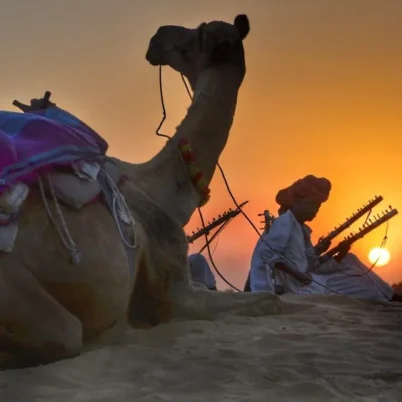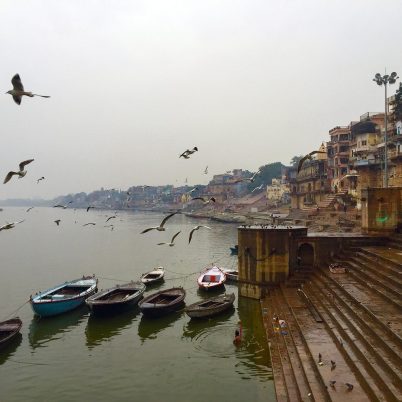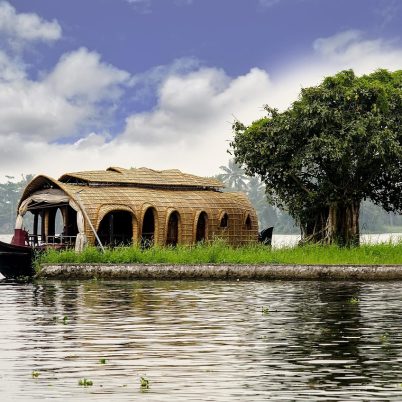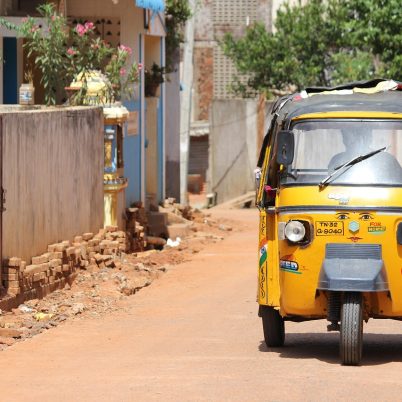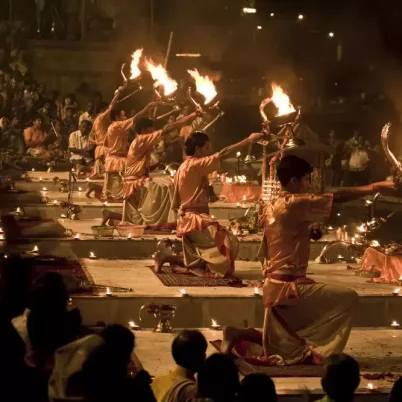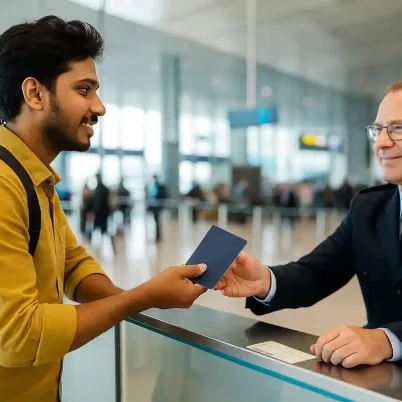
If you are planning your next trip to India, you might feel overwhelmed with the packing. There are many things you need to consider before packing for your trip to this diverse country, such as the regions, climate, seasons, activities, and more. In “Seasonal Packing List for India for Foreigners”, we make your task slightly easier by guiding you on how to pack for India according to seasons. Read on for more!
Seasons in India
India majorly experiences three seasons – winter, summer, and monsoon. From October to February is the winter season in the country. This is the busiest season for tourism, and it is easy to see why. The climate is cool and pleasant in most of the country, while the northernmost regions near the Himalayas experience heavy snowfall.
The summer season in India lasts from March to May, and it can be extremely hot in most of the country, with temperatures reaching up to 40 degrees Celsius. The tropical climate also means extreme humidity. Summers can often be quite uncomfortable except in the Himalayan regions and hill stations, where the climate is quite pleasant.
India has two monsoons – the Southwest monsoon is from June to September and is experienced by most of the country, while the Northeast monsoon is in November and December, and only affects some of the eastern states of India. The monsoon season brings moderate to heavy showers, with a few sunny days here and there.
All season packing essentials
- Carry your passport, visa, travel insurance, vaccination certificates, and all important documents.
- Keep a basic first aid kit, prescribed medications if you have any, and a doctor’s note. You will get most common medicines over the counter in Indian pharmacies, but it is best to carry the necessary ones with you.
- Pack personal hygiene products like hand sanitizer, wet wipes, sunscreen, lip balm, bug spray, and mosquito repellent.
- Carry a portable water filter or purification tablets if needed, although you will get bottled or filtered water nearly everywhere in India.
- A secure, anti-theft purse or bag is practically a necessity. It is easy to get robbed in a crowded country like India, and thieves can target tourists. Remember to lock your bags as well, for extra security.
- Pack modest and breathable clothing. Light and breathable clothing is a good choice, since a large part of India is hot and humid. Since the country is quite conservative, it is a good idea to wear clothes that cover your shoulders, chest, and thighs. This is necessary especially while visiting remote areas or religious places, out of respect for local customs. It is also a good way to prevent sunburns.
- Carry your electronics like mobile phone, charger, adapter, and power bank. Bringing a camera along is a good idea, since India is a photographer’s paradise. Preferably get a local SIM or eSIM as well.
- Carry your credit and debit cards, but also carry cash. Although digital payments are becoming increasingly common in India, it is still a cash-based economy.
Read more: The Ultimate Packing List for your trip to India

Winter season essentials(October to February)
The seasons in India also vary according to regions. In the winter season, the northernmost regions of the country get extremely cold, with temperatures dipping to -2 degrees Celsius, while the central and southern regions don’t really experience the winter season except for a few cold nights.
- If you are visiting the northern regions in winter, carry heavy woollens, thermals, gloves, and warm, layered clothes.
- For the central and southern regions, carry light woollens and layered clothes. Also carry shawls.
- It is a good idea to carry lip balm, hand cream, and moisturizer to keep your skin from becoming too dry.
- If you plan on staying in rural areas, you may not get adequate heat so carry a small hot water bag or heating pad as well.

Summer season essentials(March to May)
The country faces intense heat during the summer season, barring the northernmost regions and hill stations in India. It is best to be prepared for the heat and humidity that summer brings, especially if you are not used to it.
- Wear light, breathable cotton and linen clothes that cover your body to prevent sunburns.
- Carry a hat or a cap and sunglasses, or an umbrella.
- Make sure to carry at least SPF 50 sunscreen, electrolyte packets, and deodorant.
- Wherever you go, carry a bottle of water and keep yourself hydrated.
- You can also pack a small, portable fan for especially hot days.

Monsoon season essentials(June to September)
Monsoon season in India is usually from June to September, and can range from light showers to heavy rainfall. This is not a peak season for tourism in the country, but it is a beautiful time to visit.
- Make sure to carry a good-quality umbrella or raincoat, appropriate footwear, and waterproof rain gear.
- Wear light clothes that can dry quickly, and always keep an extra pair of clothes handy.
- Pack a microfiber towel and extra innerwear and socks.
- Get a waterproof cover for your bag as well.
- Carry ziplock bags to keep your electronics, a mosquito repellent, bug spray, and anti-fungal foot powder.
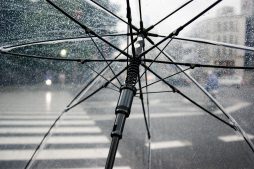
Festivals and other events
- If you are planning on attending a festival or wedding in India, you will need to carry some extra outfits, accessories, and gifts.
- If you want to wear something traditional, it is best to shop for it in India itself. Get a nice, breezy kurta or Indian-style scarf or dupatta. You can also get some nice earrings or necklaces that you can wear at festivals and events like Diwali or a wedding.
- If you are going to a wedding or if you are visiting a local family, get a small gift or souvenir for them. While not mandatory, it is expected and much appreciated.

Specific items according to regions and activities
India has a diverse geography – the snow-clad Himalayas, the deserts of Rajasthan, beaches along the east and west coast, rivers, lakes, hills, and valleys – you need to pack according to the regions as well!
- If you are visiting the Himalayas in Ladakh, Himachal Pradesh, or Sikkim, take thick jackets, heavy woollens, hiking boots, and thermal wear.
- The beaches of Goa, Andaman, and Nicobar offer sunshine and water sports, so make sure to carry swimwear, beach towel, flip-flops, and sunscreen.
- The deserts of Rajasthan can be hot, but if you are visiting in winter, you will find that the nights often get very cold. Pack layered outfits.
- If you plan on visiting a lot of temples and other religious places, carry footwear you can easily remove and put on, since you will be required to remove your footwear outside every religious place.
- For a wildlife drive, especially during the night or early morning, wear fully covered clothes, a warm jacket, hat, scarf, and gloves. It is a good idea to wear layers on wildlife safaris since the weather turns warmer during the day.
- For adventure activities like trekking, hiking, or rock climbing, wear comfortable but sturdy walking shoes because you will need to walk a lot or through uneven trails. Don’t forget to carry a bug spray or mosquito repellents if you plan on walking through natural trails.
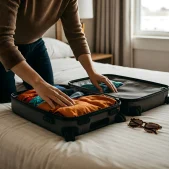 Pack according to the season and region you are visiting and the activities you plan to do
Pack according to the season and region you are visiting and the activities you plan to do
Did you find this blog useful? Let us know! At India Someday, we curate personalized itineraries to India for you based on your likes and preferences. Contact us and together we can plan the perfect trip to India for you!
Frequently Asked Questions
Foreigners should ideally wear modest clothing that covers their shoulders, cleavage, and thighs. Due to the tropical climate in most of the country, it is best to wear light, breathable clothes in layers.
It is mostly okay for men to wear shorts in India, while for women, try to limit shorts in metropolitan cities and major tourist attractions. That said, while visiting rural areas or religious places of worship, wear covered clothes that respect the local customs and traditions.
Yes, leggings are commonly worn by women in India under a kurta or long tunic, or even tshirts and tops.
helping you travel your way
Everything you need to know about India is here We have tried writing about everything you may need help with for your trip to India, If you need help in planning a trip to India Get in touch with us to to plan your trip of a life time.



